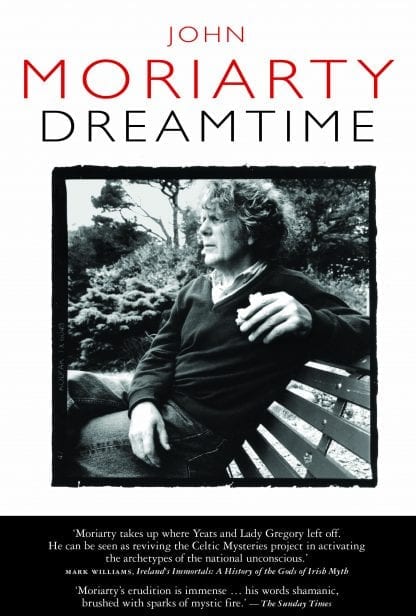
Dreamtime: Revised Edition
By: John Moriarty
Publication Date: 14 Jan 2009
€20.00
This is a revised and enlarged edition of John Moriarty’s first published work, which has been out of print since 1994. A Book of Revelations mediated by stories and personal excursions in literature, philosophy and sacred writings, John Moriarty articulates the wisdom of humanity. He draws on cultural landscapes in India, China, Egypt, Australia, the Americas and Europe. The book is now recognized as a classic of spiritual writing. It enlarges our capacity for symbolic understanding in an age of millennial anxiety.
‘John Moriarty weaves an extraordinary tapestry of myths and memories, drawing on the riches of a dazzling variety of cultures to conjure up a personal vision of a world alive to spirituality. He has none of the dangerous certainty of the wide-eyed mystic and writes with grace and subtlety, an enthralling reminder that religion is supposed to be about openness, daring and humility.’ – Fintan O’Toole, The Irish Times
‘This is one of the most extraordinary books ever published in Ireland. Not this year, not this last decade, not this century, but ever. Moriarty, an ex-academic who has worked as a gardener in the West of Ireland for many years, here takes on almost every one of the world’s great religions and many of its mythologies, particularly Ireland’s, in an attempt to embody a way to live in our time… a milestone in contemporary Irish literature and thought.’ – Brian Lynch, Evening Press
‘A thing of beauty, at once a Greek temple and a Christian basilica, read any one episode carefully and you will find every other episode begin to reflect it. John Moriarty does not claim to have prophetic foresight in any ordinary sense, yet Dreamtime is surely a work of rare prophetic power for those who have ears to hear.’ – Noel O’Donoghue, The Furrow
‘John Moriarty is a one of a kind writer.’ – Customer review
ABOUT THE AUTHOR
JOHN MORIARTY, writer and philosopher, was born in Kerry in 1938 and educated at Listowel and University College Dublin. He taught English literature at Manitoba University in Canada for six years, returning to Ireland in 1971. He is author of three volumes of Turtle Was Gone a Long Time: Crossing the Kedron (1996), Horsehead Nebula Neighing (1997) and Anaconda Canoe (1998). In 1997 he hosted a major six-part RTE television series, ‘The Blackbird & the Bell‘. He lived down from the Horse’s Glen at the foot of Mangerton Mountain in north Kerry. He died June 1st 2007. Read more here.
| ISBN | 9781901866315 |
|---|
| Weight | 0.480 kg |
|---|---|
| Dimensions | 234 × 156 mm |
| Publication Date | 14 Jan 2009 |
| Format | Paperback, 276pp |
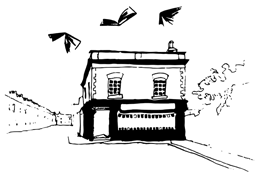
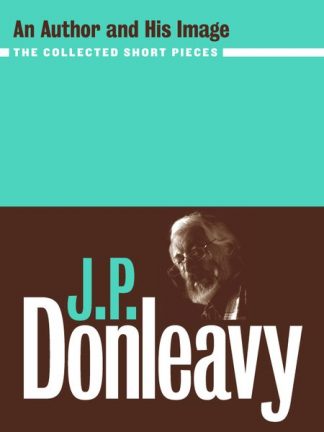

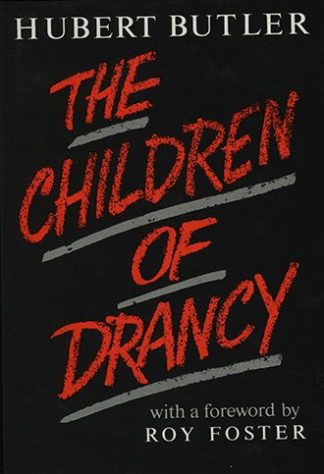
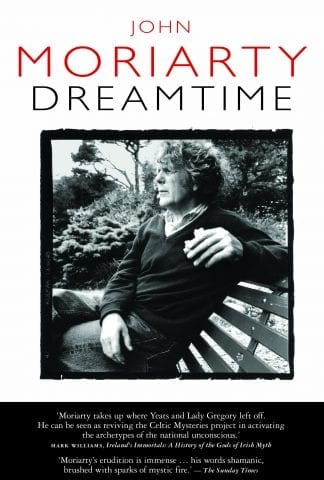
Lilliput Press –
“John Moriarty is a one of a kind writer. This book, while it might be difficult on first reading because of his many allusions to a huge swathe of literature, is well worth the effort. John is talking about one thing only, the path to enlightenment, spiritual development, and he uses his great erudition to support what he is saying. All traditions and cultures have had and have their own mythology or way to speaking about this matter. John decodes these mythologies for us. The Perennial Wisdom is John’s metier.
It takes more than one reading. My experience of this book was that it had a cumulative effect on me, a gradual coming to understand and absorb what he was saying. It is a very powerful book, I think.”
Lilliput Press –
“Like the other two books I’ve read, the recently reviewed (on Amazon) “Invoking Ireland,” and the first part of his autobiography, “Nostos,” this tends to drone on for hundreds of pages, if less than half the length of the latter book and about half the pages more allotted to the former work. Moriarty’s in the tradition not only of Yeats’ “Mythologies” or Blake but more contemporary mythopoeic magpies as William Irwin Thompson (“The Time Falling Bodies Take to Light”) or Robert Pirsig (“Zen & the Art of Motorcycle Maintenance.”) Blaming Moriarty for his recursive, spiralling, and repetitive style would be akin to hating Philip Glass or Mark E Smith (“Repetition” being an early single) for their musical locksteps.
But, as this is a review, does the content (more a high three stars, but I rounded up reluctantly for effort if not polish) of “Dreamtime” merit another look at his simple insistence, repeated over so many books, that in this one found, a decade before his death but in a 1998 “revised and expanded edition,” an early utterance? I’d go back to Mark E Smith, of whom the late John Peel mused every album of his band The Fall sounds different, yet they all sound the same. If you’re in the mood for Glass’ minimalist waves of melody, or Smith’s ranting chants (his new collaboration with Mouse on Mars as “Von Sudafed” gained one review: “like being shouted at by an old man in a bar staffed entirely by robots, but in a good way.”), then you listen until you tire of the oracular message.
Similarly, reading Moriarty for long (and I tried it on the bus and subway) puts you into an altered state, at least for a few minutes at a time. Through short chapters dealing with a blend of Irish and Welsh legend, Blake and the Bible, Matthew Arnold and Thomas Traherne, German mystics and St Teresa (of whom I have read twice the past week from Georges Bataille’s “Erotism” the same passage that Moriarty also cites, of that piercing in her ‘entrails’ with that, ahem, angelic dart to bring in B– I wish Moriarty had discussed Bataille or Foucault or surrealists, and while he may have, no extant sign of them can be traced in what I have studied so far of him) among others, this North Kerry native looks into the wisdom literature of the Australian aborigines (but less than the title would suggest), Native Americans (less than in his later work), ancient Greeks, Norse, Hindu, Buddhists, and medieval Christians (in the same proportions as his two titles referred to above) to find where we got so overeducated, so progressive, so European, so Cartesian, so post-Christian, and so lost on our modern Dover Beach of despair.
He asks that we overcome what Pascal described so well: “The eternal silence of the infinite spaces terrifies me” and counters with an Inuit encouragement: “don’t be afraid of the universe,” which Moriarty links then with our psyche, as a “psyverse.” This process of oneness with all does smack of a stoner’s reverie, but Moriarty knows no shortcuts can be hacked out; it’s taken him half his life to get to this hard-won truth. Then, thus enlightened, we can grope towards a recovery of our wounded psyches, a return to what the Hindus call Turiya, literally the fourth realm, below those of waking, sleeping with dreams, dreamless sleep: that which means simply itself as it cannot be defined, the place of ultimate truth, that which the Irish knew once as beyond the Well of Connla, when the veil is lifted and the vision reifies.
I basically summed up his own final four decades or so, ever since he left academia in 1960s Canada for his vision-quest or “aisling” (not only a trendy girl’s moniker but an Irish term denoting a spirit-woman’s poem). He takes a form reminding me both of a commonplace book (or a learned blog) combined with his own tales and thoughts, mixed with long (and sometimes too much information from primary texts quoted verbatim, and a few times a verse or snippet of a poem unidentified– is it always his own?) from shamans like himself, who have lifted the mists of Connla’s Well. What he finds he shares with us, and the work, as will his later shelf of books thick (prose) and thin (poetry, which I have not seen outside of his longer texts) speaks for himself as he wanders the paths again that he blazes here, in this comparatively early text-trek.
It’s gnomic, inspirational, chiding, speculative, and often seems in isolation as perplexing as the lyrics of Mark E Smith or the mythology of Blake or Yeats. He knows this, however, and as with Glass, the music takes on a hypnotic quality that with patience attempts glimpses of a transcendent artifice, a human creation that mirrors darkly and faintly a look at whatever lies in the fourth realm for which– and words fail before music here– we must meditate rather than rationalize. If you can handle this type of approach, fearsomely learned (that’s why a glossary is essential) but intensely heartfelt, then this may be for you.
One can enter Moriarty’s aisling at any stage in his books, at least judging from the three I have finished. I do not know, honestly, if such a pilgrim’s progress is worth reading many more of his often bulky books. He wrote much in his final fifteen years, and I can see from this comparatively compact (for him) text much that he incorporates verbatim into one of his last books, “Ireland Invoked.” (He died in 2007.)
I get the point, you might say, but how to inaugurate his dream of a more genial blend of Celtic and Christian, East and West, into our urbanized and networked mentality remains beyond me. He escaped to Connemara and then his family’s Kerry; what of those of his readers who cannot afford such a retreat? What of the Ireland he addresses today, so altered from the land of his childhood? The solutions he gives are more spiritual than practical, but such is the nature of a shaman’s encounter rather than a psychiatrist. His final decade or two was spent writing out his struggles, over and over, to wander among the ruins of our hollow land. Like the Fisher King (whom he reminds us was from Ireland), he tries in a similarly imagistic and cosmological striking pose to offer solace and repair for others as troubled as himself by our sound-bite, consumerist, monist, and capitalistically maniacal belief system.” JOHN L MURPHY
Lilliput Press –
“He is a poet, a genius, a mystic, a shaman. His words are full of wisdom and play taking you on a poetic journey of mind boggling wonders. Sometimes its heavy going but the lift from his musing is worth it.” KEVIN A POWER
Lilliput Press –
“This book demands a lot from the reader and the glossary in the back will be well used by the time you’re a quarter way through this gem of a book. In short, ‘Dreamtime’ is John’s image of a utopia where humans ‘find themselves’ by drawing on the myths of the mainstream religions whilst also learning from the Nordic, Greek and Irish myths and legends.
What we have is a book that takes the reader on a voyage of self-discovery, what you once saw as ‘reality’ may be turned upside down; (this sounds a little philosophical and of course this book is a philosophical book of sorts) But it’s much more than a philosophy book it’s a vision, a dream of (wo)man reconnecting once again with nature.
Tip: Read this book slowly, and from the beginning, then the language, myths and religions interweaving with one another is a marvel. Heavy going but a joy of a book.” MRS GERALDINE ANN MAPP
Lilliput Press –
“John Moriarty (who died in 2007) spent his life fearlessly searching the hidden depths and heights of what it is to be a human being on planet Earth, of what it is to be living in an age where God/the Divine Ground/the Sacred (the word or words used are up to you) is seemingly dead and gone.
Here in Dreamtime, his first book, he drew on his exhaustive knowledge and love of philosophy, myth and wisdom from around the world: Celtic, Native American, Shamanic, Greek, Indian, Christian. But this is not an anthology of world wisdom or a dry theological treatise, it is rather a spiritual journey into who we are, into what this world is that we find ourselves in. A stranger world, a stranger us, than we realise.
This book is like sitting round the fire while John tells story after story, myth after myth, interspersed with his own reflections, with our being slowly drawn into a new way of seeing the world, of seeing ourselves, perhaps seeing ourselves for the first time. Each story or reflection is just a few pages long.
I do not believe that having little or no knowledge of the myths that John retells us (which is largely the case with me) is a real barrier to understanding and enjoying them, perhaps even being changed by them. Because the stories all ultimately have the same purpose of aiding us to see ourselves, to see deeper into ourselves and the world, there is no need to worry too much about not knowing the strange names and words. If one story or passage baffles you, don’t worry about it, just move on to the next. It is like poetry, you can’t always get it the first or second or third time, you need to relax and give it time… Having said that, this revised and enlarged edition of Dreamtime does have a helpful Glossary to some of the names and terms used.
There is no denying that John Moriarty’s work (across several books) can be difficult to get into, with words and concepts that will be new to many people, but for me at least it is well worth the effort. It is a strange adventure into a deeper reality than the one we normally settle for.
In one story John quotes an old Eskimo shaman: “Do not be afraid of the Universe”.
John is inviting us to see, to embrace, and to not be afraid of the real Universe hidden behind the “Universe” we think we know, a strange Universe both within ourselves and outside ourselves.
(p.s. There is now a guide to John Moriarty’s work – A Moriarty Reader: Preparing for Early Spring by Brendan O’Donoghue,- which I am finding very helpful . There is also a film, Dreamtime, Revisited (Anú Pictures), which is on release (October 2012) and which is now available as DVD from anupictures.com (September 2015).)
(another p.s. See also the work of Iain McGilchrist (The master and His emissary) which, amongst other things, examines the ways in which rationalism and materialism, taken too far, can actually blind us to the realities of the world both inside and outside ourselves.)
(Apologies for yet another p.s.! I have recently come across the Dark Mountain Project (http://dark-mountain.net), which is a group of artists and ecologists who are seeking new (and old) myths and stories about our relationship to the rest of creation. What they are saying or exploring is in many ways very close to what John was exploring in his work and life.)” TOBOR